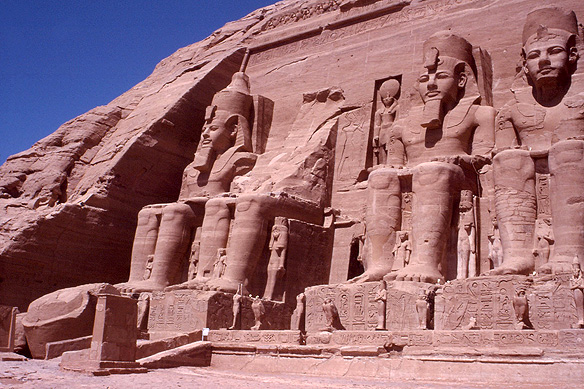
Ibn Tulun Mosque, Cairo’s oldest surviving mosque, and the Mosque of Muhammad Ali
Islam was introduced into Egypt by Amr ibn el-As in 639 AD and Egypt changed forever after that. Islam is based on the recitations of the Prophet Muhammad who was born in 570 AD in Mecca, Arabia. At the age of 40 he received the word of God through Gabriel, the archangel and for 22 years, thereafter, he recited his revelations to his followers. Islam rests on the Quran (el-Quran means the recitation). In the quest of spreading this message, the converted Arab armies led by his followers in Baghdad, conquered the Byzantine and Persian empires.
If there is time to see only one mosque in Cairo, it has to be the Ibn Tulun Mosque. Built in the 9th Century by Ahmed ibn Tulun, it is the oldest surviving mosque in Cairo. The edifice is impressive both for its large scale and minimalist classical lines. The vast courtyard is covered with pebbles, the pointed arches made of brickwork and stucco, and the spiral minaret seems to have been borrowed out of a fairytale. A 2-kilometer long wooden frieze inscribed by one-fifteenth of the Quran runs below the ceiling. Continue reading









